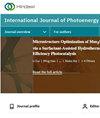中东国家首都太阳能发电与电网发电的成本效益调查:一个住宅规模的案例研究
IF 2.1
4区 工程技术
Q3 CHEMISTRY, PHYSICAL
引用次数: 1
摘要
尽管中东拥有丰富的化石燃料,但它目前是主要的能源消费国,预计将是世界上能源需求增长最快的地区。由于太阳能在中东的巨大潜力,它可以在该地区能源决策者的计划中发挥重要作用。根据迄今为止所做的研究,还没有研究表明在中东使用家庭太阳能系统的潜在好处。因此,在这项工作中,首次使用HOMER V2.81软件研究了中东国家首都太阳能发电的潜力。调查涉及技术、经济、能源和环境,研究的太阳能系统已接入国家电网。结果表明,在尼科西亚,由于向电网出售电力,平准化电力成本(LCOE)等于-0.759美元,这是生产电力的最低价格,该系统的投资回报时间为5.69年。尼科西亚站的太阳能利用率为92%,这一年可防止超过8吨的二氧化碳污染物排放。LCOE的最高值为0.25美元,与萨那有关,萨那的投资回报时间、太阳能发电量和年二氧化碳排放量分别为14.1年、53%和1162 kg。使用4种多准则决策(MCDM)方法对HOMER软件的5个输出以及其他3个影响参数的结果进行了排序分析。使用TOPSIS、GRA、WSM和AHP方法,每个站点的最终排名被认为是4种方法的平均值。结果显示,塞浦路斯站和科威特站分别是最好和最差的。本文章由计算机程序翻译,如有差异,请以英文原文为准。
Investigating the Cost-Effectiveness of Solar Electricity Compared to Grid Electricity in the Capitals of Middle Eastern Countries: A Residential Scale Case Study
Despite of being rich in fossil fuels, the Middle East is currently the main energy consumer and is projected to have the highest growth in energy demand in the world. Due to its great potential in the Middle East, solar energy can play an important role in the plans of energy decision-makers in the region. According to the studies done so far, no study has been done to show the potential benefit of using home-scale solar systems in the Middle East. Therefore, in this work for the first time, the potential of solar electricity production in the capitals of Middle Eastern countries has been studied using HOMER V2.81 software. The investigations are technical, economic, energy, and environmental, and the studied solar system is connected to the national electricity grid. The results showed that in Nicosia, due to the sale of electricity to the grid, the levelized cost of electricity (LCOE) is equal to -0.759 $, which is the lowest price for produced electricity and leads to a return on investment time of 5.69 years for this system. The solar fraction for the Nicosia station is 92%, which prevents the emission of more than 8 tons of CO2 pollutants during the year. The highest value of LCOE with the amount of $0.25 is related to Sana’a, whose investment return time, solar fraction, and annual CO2 emission prevention amount are 14.1 years, 53%, and 1162 kg, respectively. Ranking analysis was done on the results of 5 outputs of the HOMER software as well as 3 other influential parameters using 4 multicriteria decision-making (MCDM) methods. TOPSIS, GRA, WSM, and AHP methods were used, and the final ranking of each station was considered the average of the 4 methods. According to the results, Cyprus and Kuwait stations were the best and worst, respectively.
求助全文
通过发布文献求助,成功后即可免费获取论文全文。
去求助
来源期刊
CiteScore
6.00
自引率
3.10%
发文量
128
审稿时长
3.6 months
期刊介绍:
International Journal of Photoenergy is a peer-reviewed, open access journal that publishes original research articles as well as review articles in all areas of photoenergy. The journal consolidates research activities in photochemistry and solar energy utilization into a single and unique forum for discussing and sharing knowledge.
The journal covers the following topics and applications:
- Photocatalysis
- Photostability and Toxicity of Drugs and UV-Photoprotection
- Solar Energy
- Artificial Light Harvesting Systems
- Photomedicine
- Photo Nanosystems
- Nano Tools for Solar Energy and Photochemistry
- Solar Chemistry
- Photochromism
- Organic Light-Emitting Diodes
- PV Systems
- Nano Structured Solar Cells

 求助内容:
求助内容: 应助结果提醒方式:
应助结果提醒方式:


